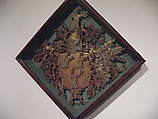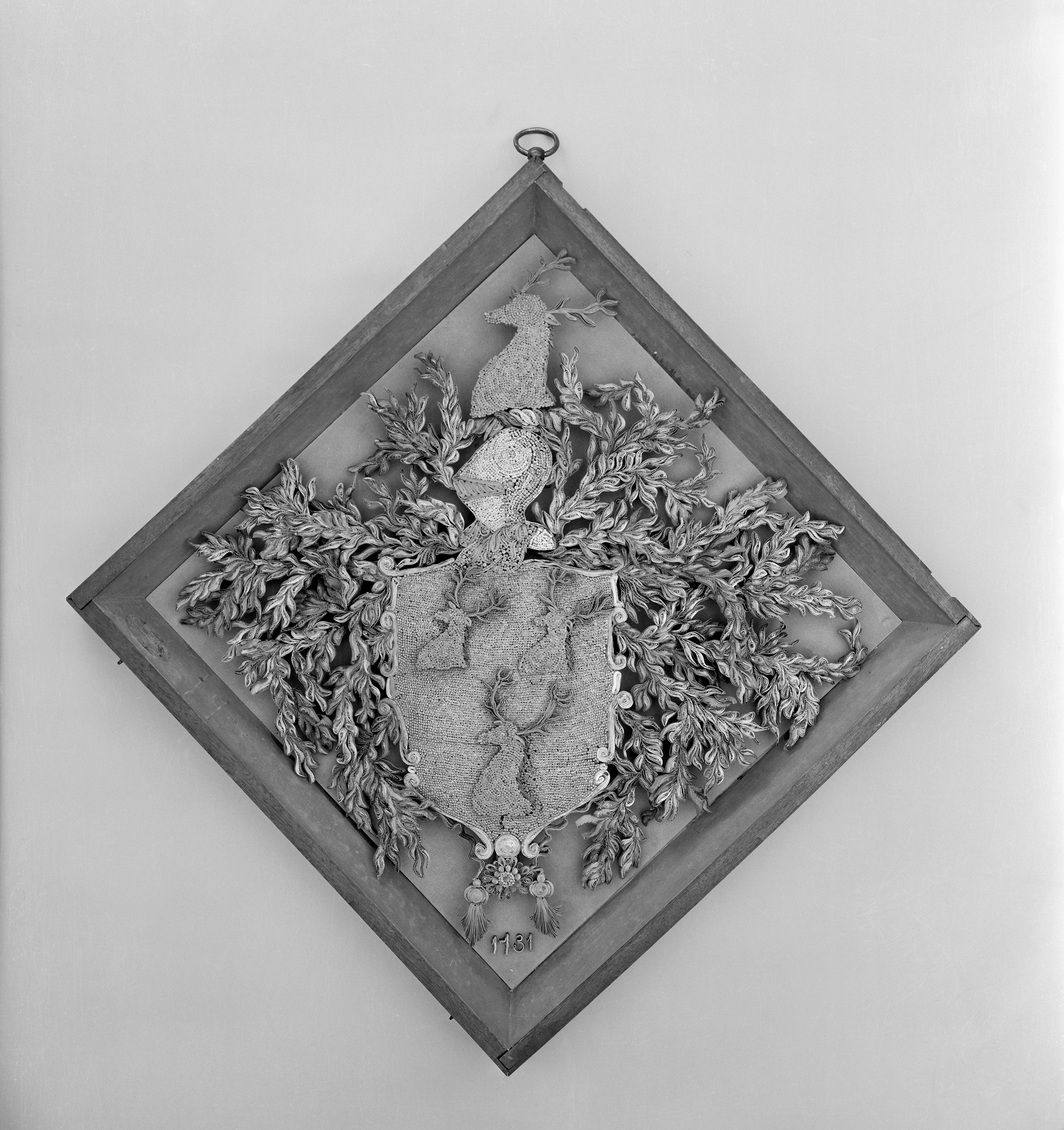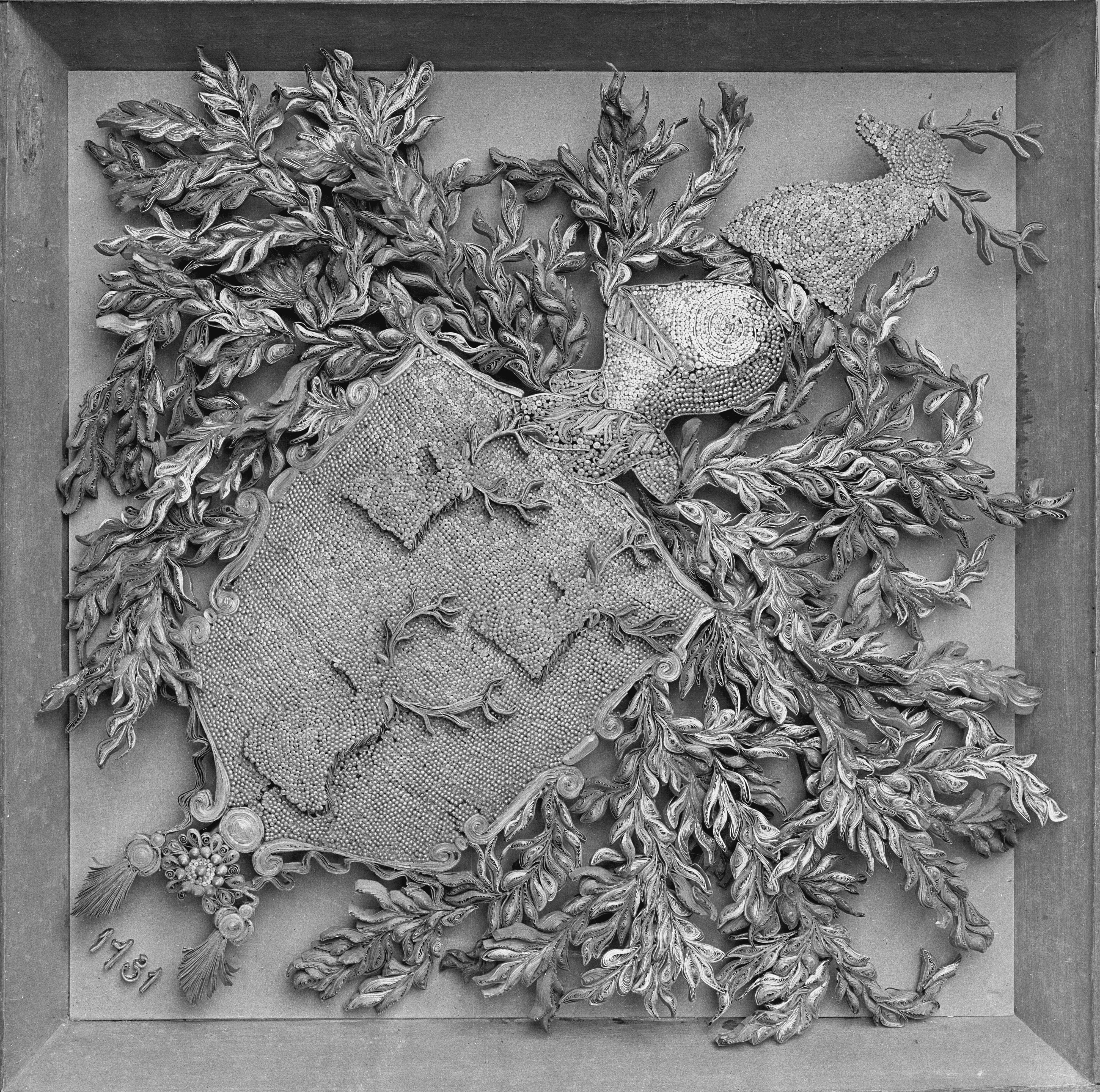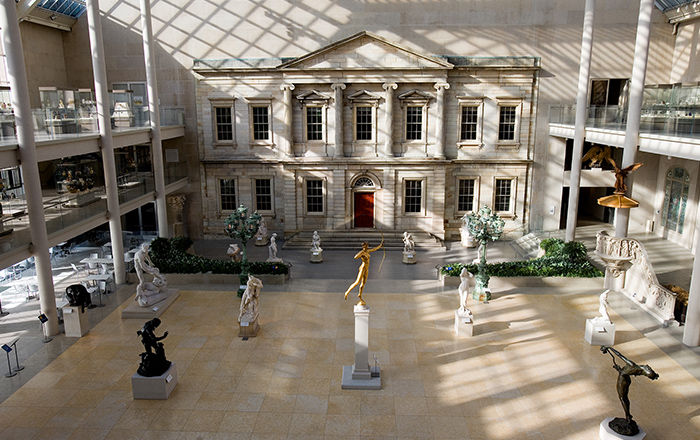Quillwork hatchment of Dering coat of arms
Possibly made by Mary Dering American
Possibly made by Elizabeth Dering American
Not on view
Throughout the eighteenth century, members of Boston’s newly prosperous merchant class decorated silver, bookplates, coaches, and tombstones with coats of arms to display their heraldic ancestry. Between 1720 and 1740, quillwork coats of arms were popular schoolgirl accomplishments. This lozenge-shaped hatchment was likely created for Henry E. Dering (1684–1750) by one of his daughters, Elizabeth or Mary. It features the Dering coat of arms, granted to a British ancestor of the girls’ grandfather Henry Dering, who emigrated to Boston in the 1660s.
This image cannot be enlarged, viewed at full screen, or downloaded.
This artwork is meant to be viewed from right to left. Scroll left to view more.




